Phylum Chordata Order Rodentia Infraorder Hystricognathi (part) | ||
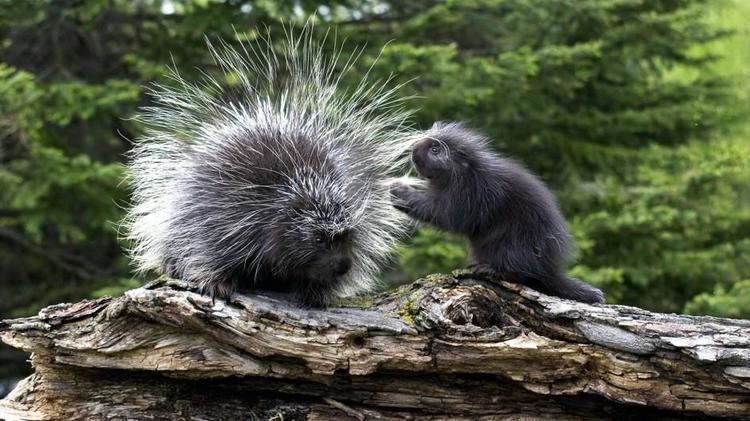 | ||
Representative species | ||
Teddy bear the porcupine s halloween feast
Porcupines are rodentian mammals with a coat of sharp spines, or quills, that protect against predators. The term covers two families of animals, the Old World porcupines of family Hystricidae, and the New World porcupines of family Erethizontidae. Both families belong to the clade Hystricognathi within the profoundly diverse order Rodentia and display superficially similar coats of quills: despite this, the two groups are distinct from each other and are not closely related to each other within Hystricognathi.
Contents
- Teddy bear the porcupine s halloween feast
- Can porcupines shoot their quills
- Etymology
- Evolution
- Taxonomy
- Old World compared to New World species
- Longevity
- Diet
- Quills
- In nature
- In politics
- State Symbols
- Habitat
- Classification
- References
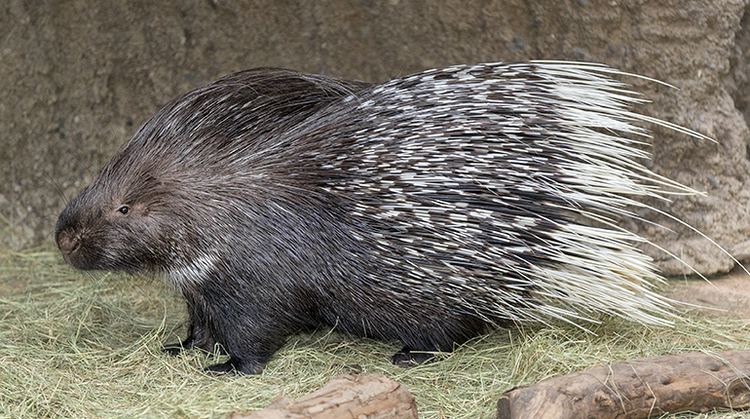
The Old World porcupines live in southern Europe, Asia (western as well as southern), and most of Africa. They are large, terrestrial, and strictly nocturnal. In taxonomic terms, they form the family Hystricidae.
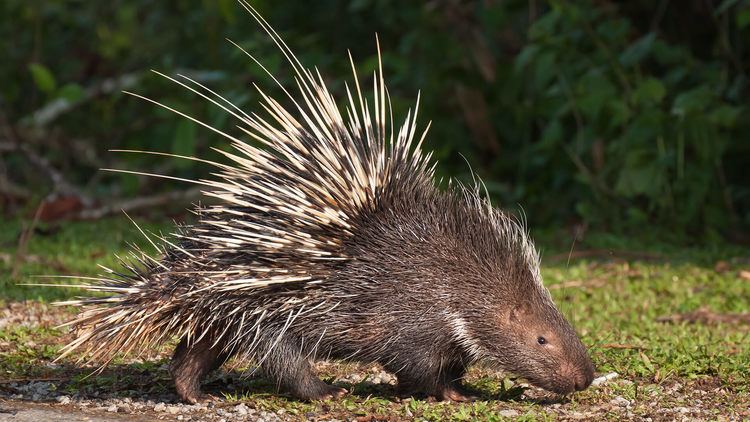
The New World porcupines are indigenous to North America and northern South America. They live in wooded areas and can climb trees, where some species spend their entire lives. They are less strictly nocturnal than their Old World relatives, and generally smaller. In taxonomic terms, they form the family Erethizontidae.
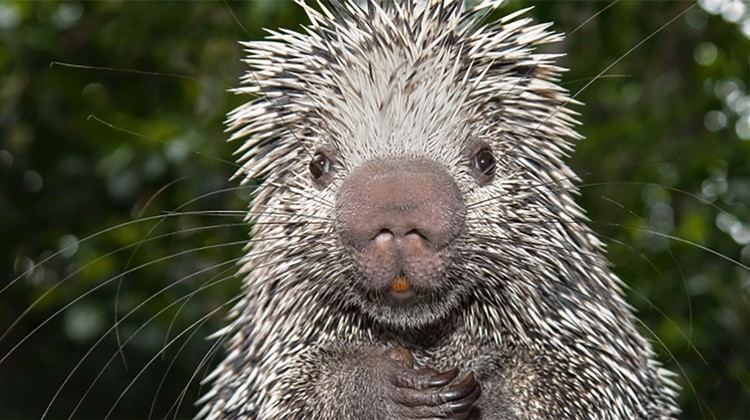
Porcupines are the third-largest of the rodents, behind the capybara and the beaver. Most porcupines are about 60–90 cm (25–36 in) long, with an 20–25 cm (8–10 in) long tail. Weighing 5–16 kg (12–35 lb), they are rounded, large, and slow. Porcupines occur in various shades of brown, gray, and white. Porcupines' spiny protection resembles that of the unrelated erinaceomorph hedgehogs and Australian spiny anteaters or monotreme echidnas.
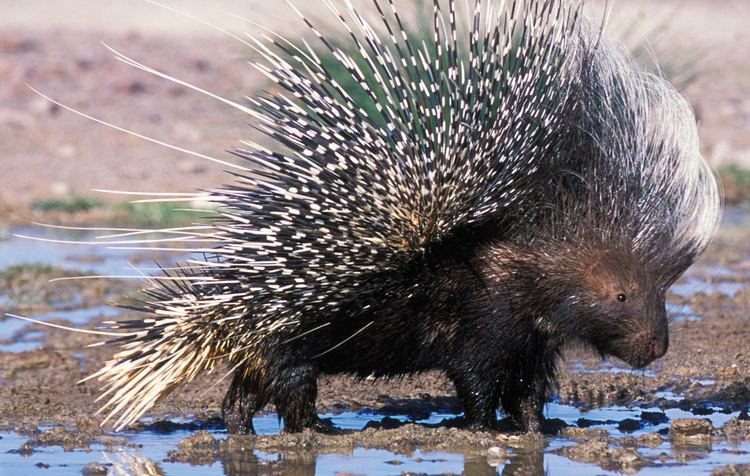
Can porcupines shoot their quills
Etymology
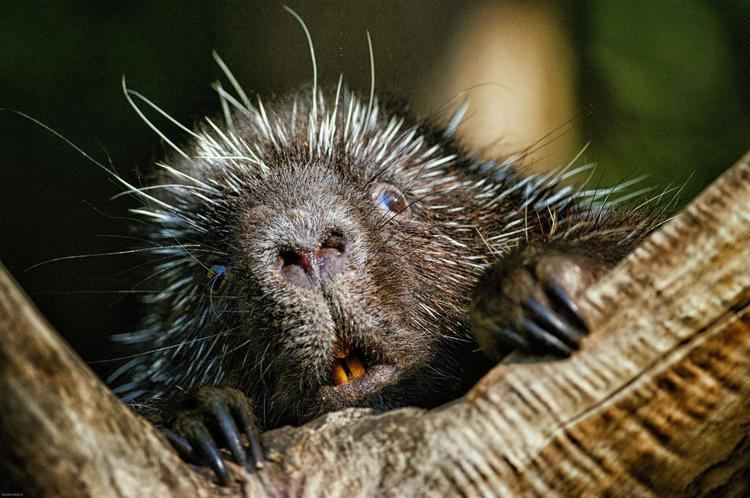
The name "porcupine" comes from Latin porcus pig + spina spine, quill, via Old Italian—Middle French—Middle English. A regional American name for the animal is quill pig. Similarly, the German name, Stachelschwein, means "thorn-swine" and the Afrikaans name, ystervark, means "iron pig".
Evolution
Fossils belonging to the Hystrix genus date back to the late Miocene of Africa.
Taxonomy
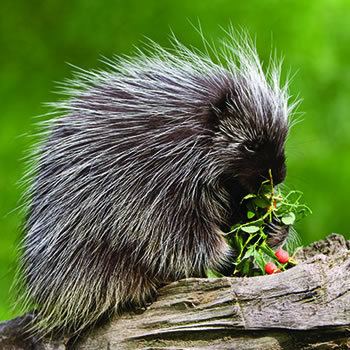
A porcupine is any of 29 species of rodents belonging to the families Erethizontidae (genera: Coendou, Erethizon and Chaetomys) or Hystricidae (genera: Atherurus, Hystrix, and Trichys). Porcupines vary in size considerably: Rothschild's porcupine of South America weighs less than a kilogram (2.2 lb); the crested porcupine found in Italy, Sicily, North Africa, and sub-Saharan Africa can grow to well over 27 kg (60 lb). The two families of porcupines are quite different, and although both belong to the Hystricognathi branch of the vast order Rodentia, they are not closely related.
Old World compared to New World species
The 11 Old World porcupines tend to be fairly large, and have spikes grouped in clusters.
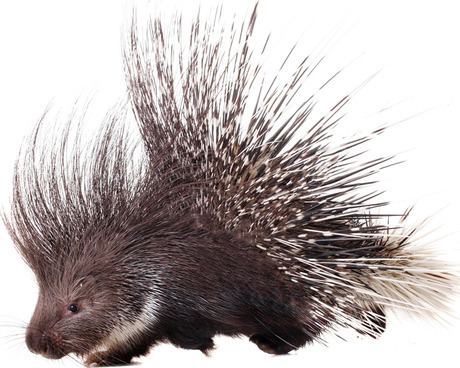
The two subfamilies of New World porcupines are mostly smaller (although the North American porcupine reaches about 85 cm or 33 in in length and 18 kg or 40 lb), have their quills attached singly rather than grouped in clusters, and are excellent climbers, spending much of their time in trees. The New World porcupines evolved their spines independently (through convergent evolution) and are more closely related to several other families of rodents than they are to the Old World porcupines.
Longevity
Porcupines have a relatively high longevity and had held the record for being the longest-living rodent, with one individual living to 27 years, until the record was recently broken by a naked mole-rat living to 28 years.
Diet
The North American porcupine is a herbivore; it eats leaves, herbs, twigs, and green plants such as clover. In the winter, it may eat bark. It often climbs trees to find food.
The African porcupine is not a climber and forages on the ground. It is mostly nocturnal, but will sometimes forage for food in the day. Porcupines have become a pest in Kenya and are eaten as a delicacy.
Quills
Porcupines' quills, or spines, take on various forms, depending on the species, but all are modified hairs coated with thick plates of keratin, and embedded in the skin musculature. Old World porcupines (Hystricidae) have quills embedded in clusters, whereas in New World porcupines (Erethizontidae), single quills are interspersed with bristles, underfur, and hair.
Quills are released by contact or may drop out when the porcupine shakes its body. New quills grow to replace lost ones. It was long believed that porcupines had the ability to project their quills to a considerable distance at an enemy, but this has since been proven to be untrue.
In nature
Porcupines are only occasionally eaten in Western culture, but are very popular in Southeast Asia, particularly Vietnam, where the prominent use of them as a food source has contributed to significant declines in their populations.
More commonly, their quills and guardhairs are used for traditional decorative clothing. For example, their guardhairs are used in the creation of the Native American "porky roach" headdress. The main quills may be dyed, and then applied in combination with thread to embellish leather accessories such as knife sheaths and leather bags. Lakota women would harvest the quills for quillwork by throwing a blanket over a porcupine and retrieving the quills it left stuck in the blanket.
Porcupine quills have recently inspired a new type of hypodermic needle. Due to backward-facing barbs on the quills, when used as needles, they are particularly good at two things – penetrating the skin and remaining in place. The presence of barbs acting like anchors makes it more painful to remove a quill that has pierced the skin of predator.
In politics
In 2006, Kevin Breen created a political mascot, a porcupine similar to the animals that represent the two major political parties in the United States; the Democratic Party donkey and the Republican elephant. The porcupine image is often used to represent the U.S. Libertarian party, and even used by some official state Libertarian parties.
State Symbols
The Ashanti state of present-day Ghana have used the Porcupine as their state symbol since its founding. The native word for the Porcupine in Asanti-Twi is "kotoko" which literally means "bend and fight". It refers to the ability of the porcupine to bend and attack its attackers with quills from different angles without losing ground or allowing the enemy to subdue them. This became a military philosophy the Ashanti state adopted which culminated in the use if many military units that attacked from different angles in war. Also, Ashanti warriors were known for crawling on their bellies during gun exchanges as a means of gaining a tactical advantage over their opponents on guerrilla maneuverings. The official state soccer team of Ashanti is called Asante Kotoko and it is nicknamed the Porcupine Warriors. The club's emblem is the porcupine which symbolizes the history of the Ashanti state.
Habitat
Porcupines occupy a short range of habitats in tropical and temperate parts of Asia, Southern Europe, Africa, and North and South America. They live in forests and deserts, and on rocky outcrops and hillsides. Some New World porcupines live in trees, but Old World porcupines stay on the rocks. Porcupines can be found on rocky areas up to 3,700 m (12,100 ft) high. They are generally nocturnal but are occasionally active during daylight.
Classification
Porcupines are distributed into two evolutionary independent groups within the suborder Hystricomorpha of Rodentia.
